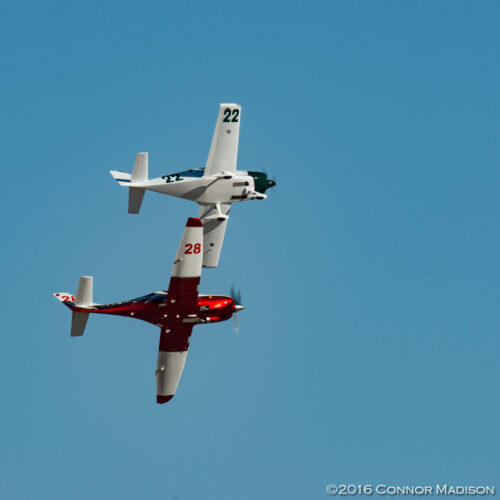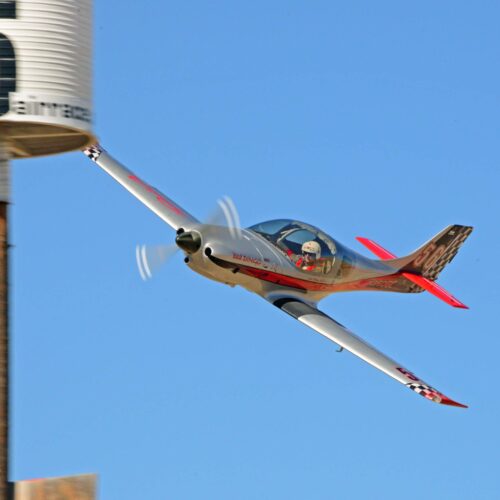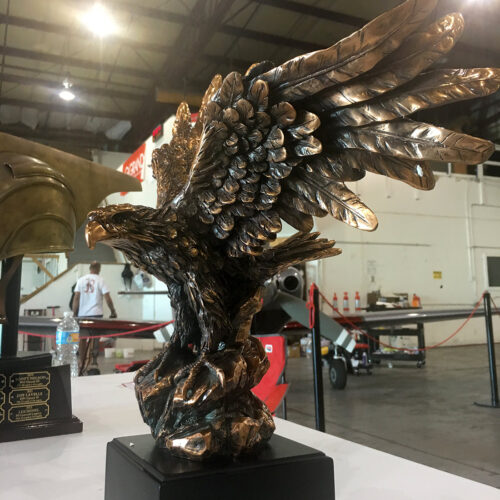Reno Air Racing – Everything the RPA prepared me for …
Pylon air racing – a Red Star Pilots Association1 (RPA) objective? Perhaps not intuitively, however the skillset required to participate safely in this “uncooperative” formation flying event is at the core of RPA activities. From flight briefing, to formation take-off, station keeping and angle geometry flying, all of our sorties exercises find an echo in Reno Air Racing.
While historically, the RPA jets reign kings of the Jet Class in Reno with L-39s and L-29s always battling at the top, the recent import of TB-30s and their acceptance in the RPA group offers an avenue to the more affordable Sport Class Air Racing. The Sport Class rules allows for any aircraft capable of 200mph average speed around the pylons to compete if they are in experimental, homebuilt or exhibition category. With only 36 slots and 40 something applicants every year it pays to be faster than 200mph to be sure to get in, but a stock RV-8 did race this year thanks to mechanicals affecting other competitors. My stock TB-30 qualified at 222.9mph in 2018 and 238.1mph in 2019 thanks to a healthy 580 upgrade and a few aero mods.
When coming to race at Reno, the first right of passage is the Pylon Racing School (PRS) held every year in June. This five day event is stretched to a full week when participating in the Sport Class category, two extra days being dedicated to pure formation flying.
There are a few particularities with Sport Class formation flying when compared to a typical RPA sortie: first and foremost ground operations: lead aircraft also represents the pace plane, as such #2 taxis out for the group with leads coming last. This will allow lead to come in last on the runway and visually check every airplane before taking off in sequence, after #2 has staged the flight on the cold side of the runway. Another particularity during run-up, which is quite welcome: every wingman visually scans the aircraft next to him for any opened panel/canopy/smoke/telltale signs before passing along the thumbs up signal; an amplified head scan gives the reassurance to the fellow wingman that the check is thorough.
After individual take-off the next oddity for an RPA flyer can be found: the rejoin is conducted with all airplanes to the outside echelon (in order to cater to 8 airplanes on race day) and you don’t wait for a fellow wingman if she/he is slow on the rejoin: pass under and behind her/him and leave the more than appropriate space in the echelon. This allows for the most expeditious rejoin on race day, there is only one extended 360 before getting in line abreast position for the race to start.
The last particularity is that all communications are done over the radio: no hand signals in this flight. This is to cater to a few racing particularities: pilots come from different backgrounds and the workload in the cockpit can be heavy for the most modified racers.
Then the sorties proceed as usual with station keeping exercises, wing work, position changes and extended trail. Participating in those flights with the top racers can be eye watering with initial rejoin speeds of 160kts indicated at 8,000ft and wing work done at 205kts indicated at 10,000ft, that’s 250kts true airspeed easily achieved by Thunder Mustangs, Super Glasairs, and Legacys… in extended trail the true airspeed exceeds 320kts frequently!
At the bottom of the class, where the TB-30 resides along smaller Lancairs and RVs, the rejoin speed is briefed at 120kts indicated and wing work at 130/140kts… even though it can creep easily to 150kts.
The whole PRS experience, especially the formation warm-up is very much akin to a big RPA event, with mass briefings, focus on safety considerations and as many sorties as you can muster a day. However, on Thursday it all gets real, with the first flight on the course. For those like me who have been fans of the races for a long time, this is like entering consecrated grounds, maybe like a first arrival at OSH: concentrating on not messing up anything while enjoying the experience at the same time.
It is also where one discovers what uncooperative formation means: for the sake of safety, you can only pass on the outside of the track, while keeping the inside plane in sight at all times until he/she calls you clear to pass or until you have a clear two ship lengths advantage. You soon discover all the tricks the veterans have to force you onto a longer and therefore slower flightpath.
Nevertheless, the exhilaration of flying “balls out” at 50ft of the ground while looking for the next pylon and scanning for the other aircrafts on the track is addictive. While the first flights are a full sensory overload and the focus is on staying safe, soon the landscape becomes familiar and the position of the other airplanes more obvious. This is when you discover that even though this sport is a race, the main adversary is oneself: how to improve the airplane? How to better the trajectory? Was I too high? Too low? And of course, never tight enough until you cut the pylon.
The fraternity of the Reno Race pilots is very much like the RPA family as well: while everybody is welcome, you have to prove yourself in flying skills and aircraft management, with the primary goal not to scare anybody. The main goal is safety and safety only. When accepted into the group, the help and resources offered are truly first class, but the fangs come out on the racetrack (as one would expect).
While the speeds between a Super Legacy and an RV-4 may be 200mph apart, all race pilots have the same critical eye for precise flying and modification engineering: 80% of the races are battled before coming to Reno, and chasing down drag and increasing power become an everyday obsession.
On a more personal point of view, the racing experience has been highly fulfilling. It is a once a year rhythm very compatible with a full time work schedule, unlike airshows that require more sacrifices to attend regularly. In addition, the engineering approach to bettering an airplane, which I already had a glimpse of in aerobatic competition, is continuously thrilling: my TB-30 has gained a little more than 10kts, 500ft/min and a better roll rate as a result of the Reno modifications, and I get to enjoy those improvements each time I go flying.
Can’t wait to see an RPA’er show up with an M-14p racer someday!
1 The Red Star Pilots Association (RPA) is a Federal 501(c) (3) Not-For-Profit corporation registered in the state of Virginia. The association’s mission is to promote and preserve the safe operation, display and enjoyment of all aircraft originating in the current and former communist block nations.











